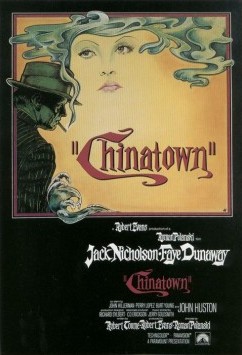 |
| Al Pacino in Scarface |
Manny Ribera: Steven Bauer
Elvira Hancock: Michelle Pfeiffer
Gina Montana: Mary Elizabeth Mastrantonio
Frank Lopez: Robert Loggia
Mama Montana: Miriam Colon
Omar Suarez: F. Murray Abraham
Alejandro Sosa: Paul Shenar
Mel Bernstein: Harris Yulin
Director: Brian De Palma
Screenplay: Oliver Stone
Based on a screenplay by Ben Hecht, Seton I. Miller, John Lee Mahin, W.R. Burnett adapted from a novel by Armitage Trail
Cinematography: John A. Alonzo
Art direction: Edward Richardson
Film editing: Gerald B. Greenberg, David Ray
Music: Giorgio Moroder
Brian De Palma's Scarface ends with a dedication of the film to Howard Hawks and Ben Hecht, the director of and the author of the story for the 1932 Scarface. As well it might, for De Palma's film and Oliver Stone's screenplay follow the outlined action and many of the characters of the earlier film far more closely than many remakes do. Most of the major characters have counterparts in the 1932 film: the Italian Tony Camonte becomes the Cuban Tony Montana; the first Tony's best friend, Guino Rinaldo, becomes Manny Ribera; Tony's sister, Cesca, becomes Gina; his boss Johnny Lovo's mistress, Poppy, becomes Tony Montana's boss Frank Lopez's mistress, Elvira. Both Mama Camonte and Mama Montana are sternly disapproving presences, and the appropriate characters are bumped off in more or less the same sequence and circumstances as in the earlier film. Because of the relaxation of censorship, there's a little heightening of some subtext from the first film: Gina taunts Tony Montana with having incestuous feelings for her more explicitly than Cesca ever dares with Tony Camonte. And although the earlier film was thought to be excessively violent, the remake goes boldly where it didn't dare, starting with a chainsaw murder and ending with a veritable orgy of gunfire, including that of Tony's "little friend," a grenade launcher. The violence of De Palma's film first earned it an X rating, which was bargained down to an R after some suggested cuts -- although De Palma has claimed that he actually released the film without the cuts, and no one noticed. The remake's violence also turned off many of the critics, although it received a strong thumbs up from Roger Ebert. Since then, of course, the movie has become a cult classic, and more people have seen the remake than have ever seen the original. Which is a shame, because the original, despite some occasional slack pacing and the inevitable antique feeling that lingers in even pre-Production Code movies, is a genuine classic, while De Palma's version feels like a rather studied attempt to go over the top. Screenwriter Stone was never noted for subtlety, and while Al Pacino is one of the great movie actors, De Palma lets him venture into self-caricature, especially with what might be called his Cubanoid accent. On the other hand, Steven Bauer -- who was born in Cuba and sounds nothing like Pacino's Tony -- is a more appealing sidekick than George Raft was, and Michelle Pfeiffer, in one of her first major film roles, makes a good deal more of Elvira than Karen Morley did of Poppy, even though Pfeiffer is asked to do little more than look beautifully sullen and bored throughout the film. Scarface is at best a trash classic, a movie whose impact is stronger than one wants it to be.
